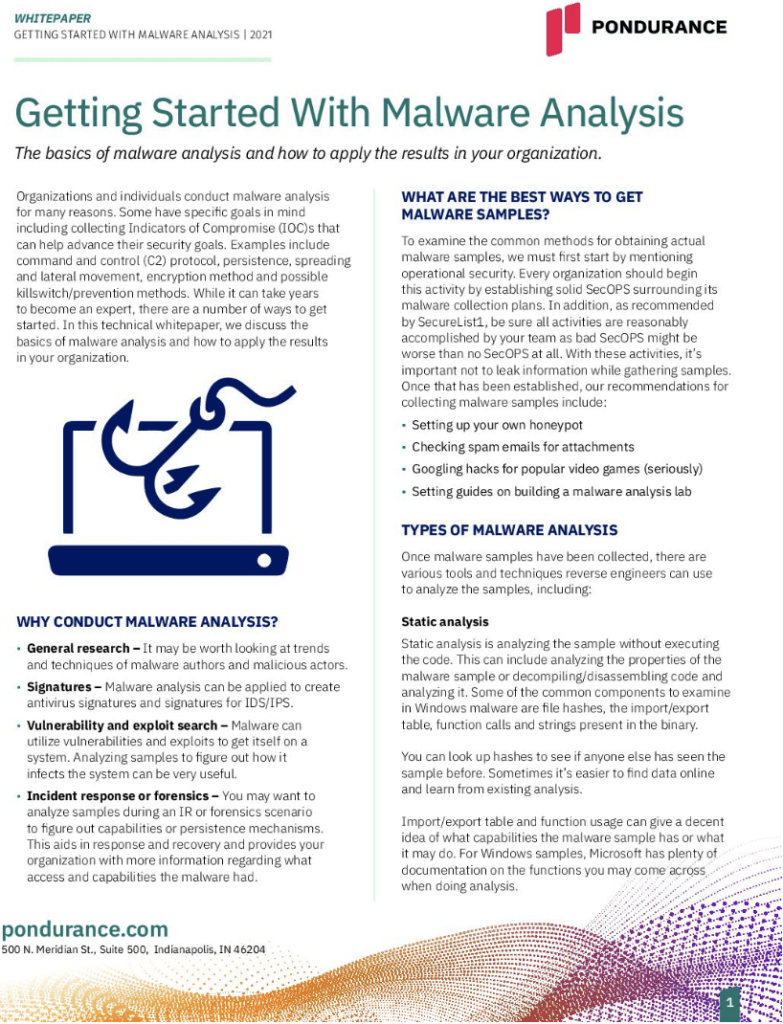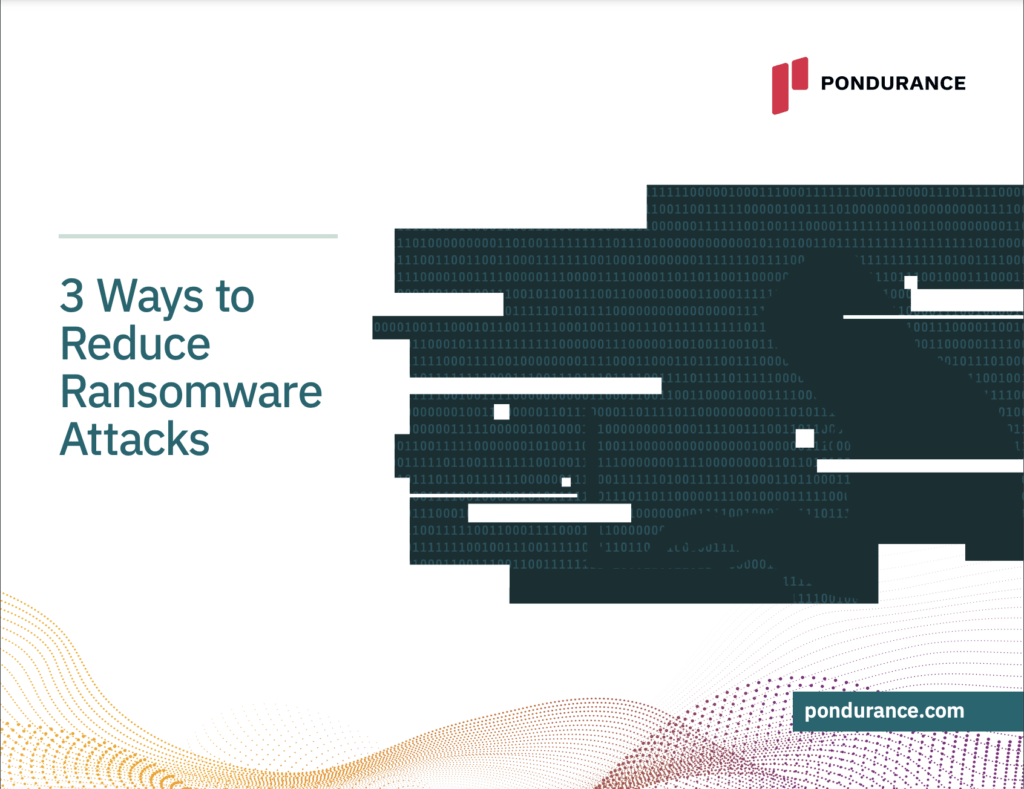Our privacy policy is located here.
Common Attack Vectors
And Keys to Protecting Your Business
Business Email Compromise (BEC)
Additional BEC Resources
Identify. Prioritize. Protect.
Malware
- Install reputable antivirus software and ensure it remains up to date
- Regularly update your operating system and all installed applications
- Enable built-in firewalls on your devices
- Be cautious of email attachments and links from unknown sources
- Utilize strong passwords and enable multifactor authentication (MFA) where possible
- Create regular backups of your important files and store them securely offsite
- Employee training – Educate staff members about potential threats such as phishing emails and social engineering tactics employed by cybercriminals
- Network segmentation – Divide your organization’s network into separate zones to minimize the spread of malware should an attack occur
- Vulnerability management – Regularly assess, identify, and remediate vulnerabilities in your IT infrastructure before they can be exploited by attackers
- Incident response planning – Develop a well-defined incident response plan outlining roles, responsibilities, and procedures to follow when faced with a security breach
Ransomware
- Keep all computers and devices patched
- Enable MFA
- Limit user access
- Allow only authorized applications
- Use network segmentation
- Limit remote access as much as possible
- Establish 360-degree visibility
- Monitor and analyze logs
- Provide consistent security awareness training
- Encrypt endpoints
Phishing
Additional Phishing Resources
Spear Phishing
Additional Spear Phishing Resources
Business Email Compromise (BEC)
Business email compromise (BEC) poses a significant threat to organizations, leveraging trust in email communication to execute unauthorized transactions or access sensitive data. As one of the top cybersecurity companies, it’s essential to understand the nuances of BEC attacks and implement effective cyber risk management strategies to mitigate potential impacts.
The prevalence of BEC attacks underscores the importance of informed security teams and comprehensive threat intelligence. Cyber threat assessments reveal that BEC attacks have a high success rate, resulting in substantial financial losses and reputational damage for businesses. To enhance cybersecurity posture, organizations must prioritize vulnerability management and prioritize reducing cyber risk through proactive measures.
Recognizing the human element in cyber threats, top cybersecurity companies emphasize employee training to recognize potential threats and prevent data breaches. By raising awareness about common BEC tactics like spear-phishing, businesses can empower their workforce to identify and report suspicious activity.
Multi-factor authentication (MFA) plays a crucial role in cyber risk reduction by adding layers of security to sensitive information systems. Implementing strong authentication measures can thwart BEC attacks even if attackers compromise login credentials, thereby safeguarding against potential threats.
Furthermore, a robust risk management strategy involves establishing clear policies and procedures for verifying high-value transactions. By integrating security controls and checks, businesses can prevent unauthorized access and mitigate the impact of BEC attacks on their operations and reputation.
In the face of evolving cybersecurity threats, organizations must adopt a proactive stance by leveraging advanced technologies and human expertise. By combining cutting-edge tools with informed security practices, businesses can strengthen their defenses against BEC attacks and protect sensitive data from exploitation.
Types of BEC Attacks
The main goal of BEC attackers is to gain access to sensitive information, financial resources, and confidential data. In recent years, BEC attacks have become increasingly prevalent and complex, posing significant risks to businesses across various industries. One standard method used in business email compromise attacks is social engineering. This involves exploiting human psychology and manipulating employees’ trust in order to gain access to the targeted organization’s systems or information.
Social engineering tactics can include pretexting, baiting, and tailgating, among others. For example, an attacker may pretend to be a company executive or a vendor requesting urgent payment for an outstanding invoice by sending an email that appears legitimate but contains fraudulent account details. Phishing is another technique utilized in business email compromise scams. It involves sending deceptive emails designed to look like they come from a reputable source with the intention of tricking recipients into clicking on malicious links or downloading harmful attachments.
These actions may lead to the installation of malware or granting the attacker unauthorized access to sensitive information such as login credentials and financial data. Apart from these methods, several types of business email compromise schemes vary based on their specific objectives and techniques. The different types of BEC attacks include, but not are limited to the following business email compromise examples:
Bogus Invoice Scheme
In a bog invoice type of BEC attack, scammers pose as legitimate vendors or suppliers by using compromised email accounts. They contact employees responsible for handling payments within the targeted organization and request payment for fictitious invoices.
CEO Fraud
A CEO fraud scheme involves impersonating high-ranking company officials such as CEOs or CFOs and sending emails with urgent requests for wire transfers or other financial transactions. These messages often convey a sense of urgency and confidentiality, pressuring employees into complying without verifying the legitimacy of the request.
Account Compromise:
Attackers can gain unauthorized access to an employee’s email account within the targeted organization, and these types of BEC attacks are known as account compromises. The attackers use the compromised account to send emails requesting financial transfers or divulging sensitive information.
Attorney Impersonation
Scammers can also pretend to be legal representatives or law enforcement officials and contact employees within the targeted organization, often claiming that immediate action is required regarding a confidential matter such as a lawsuit or pending investigation.
Data Theft
This data theft type of BEC attack focuses on obtaining sensitive data such as employee records, customer information, and intellectual property. The stolen data can be used for various malicious purposes, including identity theft, fraud, and corporate espionage.
To combat business email compromise attacks, organizations must adopt comprehensive cybersecurity measures that include regular employee training on recognizing phishing emails and social engineering tactics, implementing strong access controls for sensitive information, and deploying advanced threat detection and response technologies. By understanding the various types of BEC attacks and their underlying motives, businesses can better protect themselves against this growing threat landscape.
BEC Prevention
The adverse impacts of BEC attacks can be overwhelming for businesses, but with adequate measures in place, it is possible to reduce cyber risk significantly. Preventing BEC attacks requires a comprehensive approach, integrating robust cybersecurity solutions with effective risk management strategies.
One crucial element in this mix is the deployment of advanced business email compromise tools designed to monitor emails for signs of malicious intent and thwart potential threats before they materialize, like the Managed Detection and Response (MDR) solution from Pondurance. A multi-layered cybersecurity solution such as this is essential for BEC prevention. This should include advanced threat detection capabilities that identify unusual patterns and behaviors associated with email compromise attempts.
It’s also important to have secure communication channels in place, employing encryption mechanisms such as Secure Sockets Layer (SSL) or Transport Layer Security (TLS) to protect sensitive data from being intercepted or tampered with during transmission. Another vital component of an effective BEC prevention strategy is employee training and awareness programs. By educating employees about common phishing tactics used by cybercriminals and how to recognize potential red flags in suspicious emails, organizations can significantly minimize the risk of falling victim to BEC scams.
However, even with sophisticated technology and well-trained employees in place, there remains a need for continuous monitoring and assessment of the organization’s cybersecurity posture. This is where Pondurance steps into the arena as an ideal partner for organizations striving towards comprehensive BEC prevention.
Pondurance takes pride in offering an innovative blend of AI-powered technology coupled with human intelligence to deliver unparalleled detection capabilities that effectively respond to evolving cyber threats. Their belief that relying solely on AI and automation is insufficient resonates strongly within their services – recognizing that attackers are not machines but people who are constantly adapting their strategies.
Leveraging decades of experience in the cybersecurity domain, Pondurance’s experts work relentlessly to speed up the detection and response process. By deploying a range of advanced business email compromise prevention techniques, they help organizations contain cyber threats swiftly and minimize potential damage. Among the various solutions offered by Pondurance is their managed threat detection and response service. This comprehensive package includes 24/7 monitoring, expert analysis, incident response planning, and timely communications to ensure that organizations are always one step ahead of attackers.
Pondurance also provides actionable insights through our cybersecurity risk management services. These enable organizations to identify areas of vulnerability in their current defenses and prioritize mitigation efforts based on industry best practices and regulatory requirements. Pondurance’s Managed Detection and Response is an excellent defense against BEC attacks and is just one of our modern cybersecurity solutions. We also offer Incident Response solutions and advisory services, along with risk-based cybersecurity products tailored for specific industries, such as healthcare, retail, and more. Pondurance’s solutions are perfect for organizations of all sizes and industries.
Business email compromise prevention requires a concerted effort from both technology and human expertise. By partnering with a cybersecurity leader such as Pondurance, who possesses deep knowledge in this field, organizations can significantly fortify their defenses against the ever-evolving landscape of BEC attacks. With proactive measures in place, businesses can confidently safeguard their sensitive data and maintain a resilient posture against cyber threats. That’s where Pondurance can help, as we offer a wide range of cybersecurity solutions backed by human intelligence. To learn more about Pondurance’s Managed Detection and Response and other solutions, request a demo today.
Related Topics
- Mdr Consultant
- Mdr Vs Edr
- How To Avoid Phishing
- What Is Incident Response
- Ransomware Playbook
- Mdr Solution
- How To Prevent Ransomware Attacks
- Incident Response Cybersecurity
- What Is Mdr
- What Is Managed Detection And Response
- Mdr Services
- Managed Detection And Response
- Mdr Cybersecurity
- Nist Incident Response
- What Is Mdr In Cybersecurity
- Spear Phishing
- Cyber Incident Response
- Threat Hunting
- How To Prevent Malware Attacks
- How To Protect Against Ransomware
- Phishing Attack
- Endpoint Detection And Response
- What Is Malware
- What Is Ransomware
- Security Operations Center

